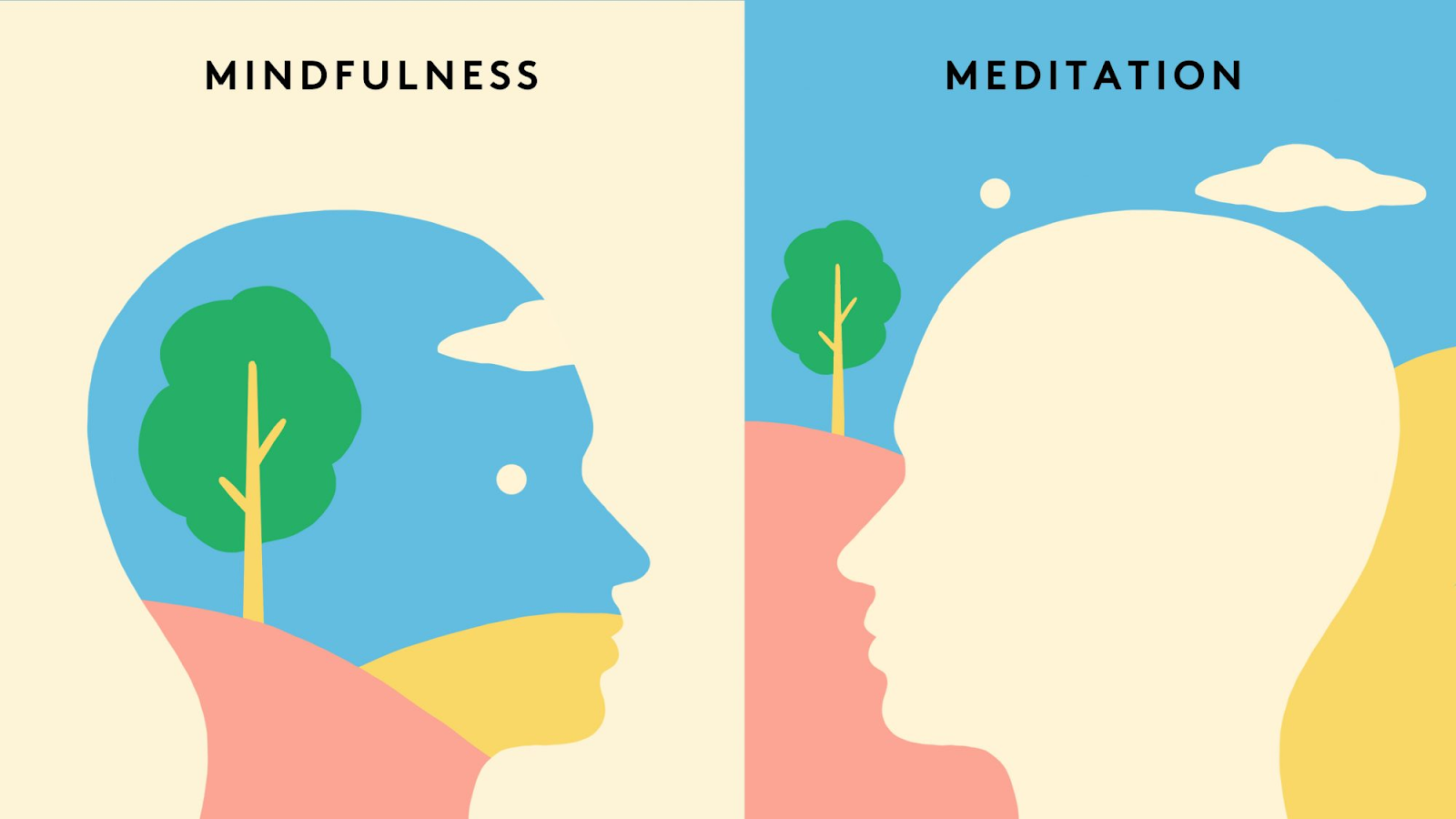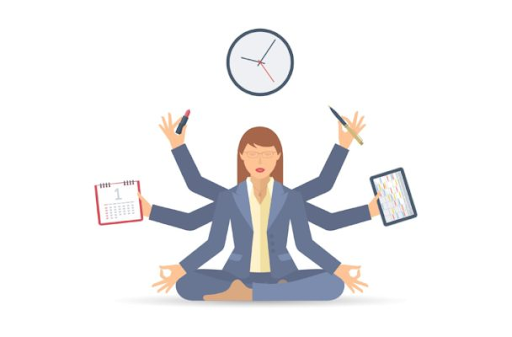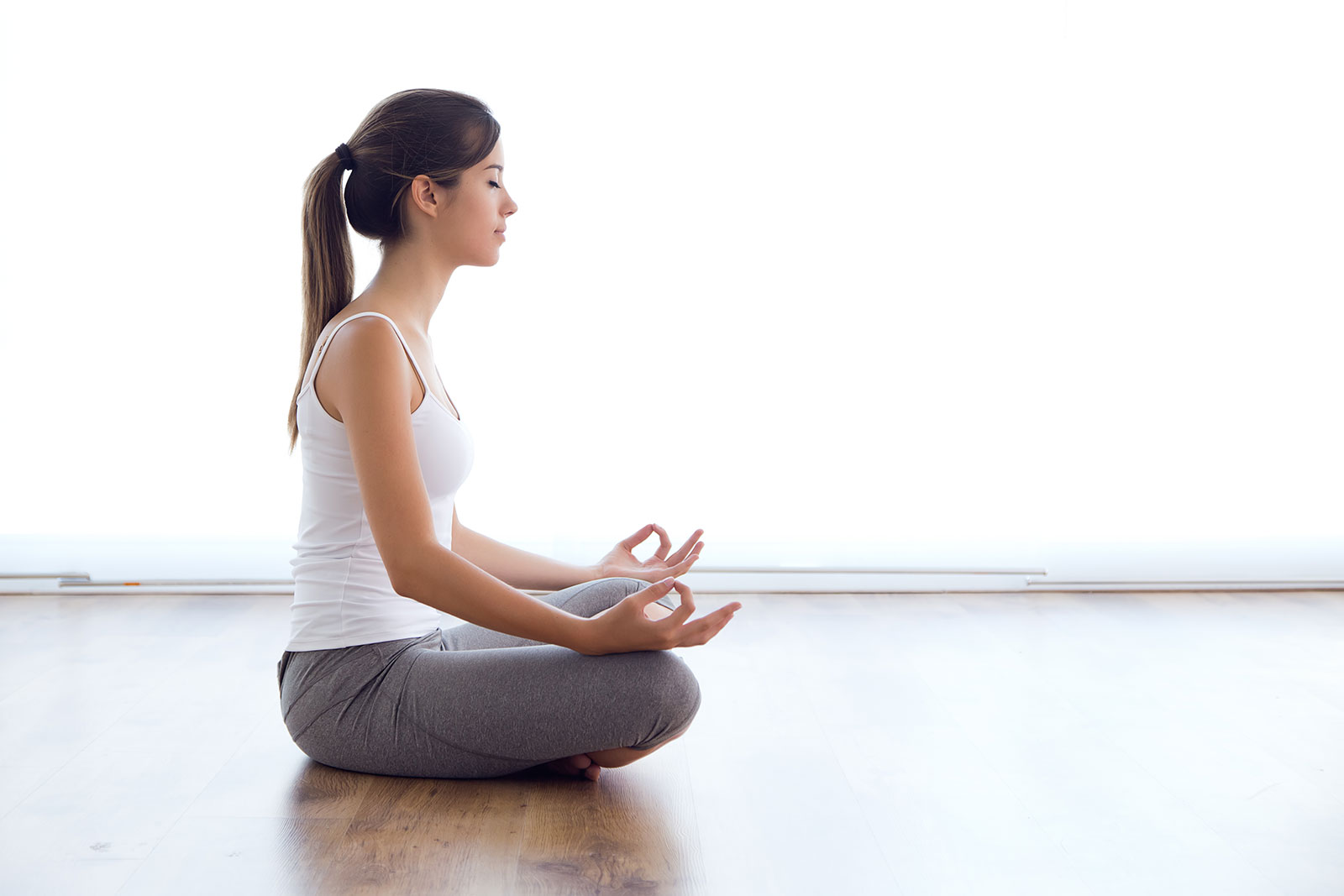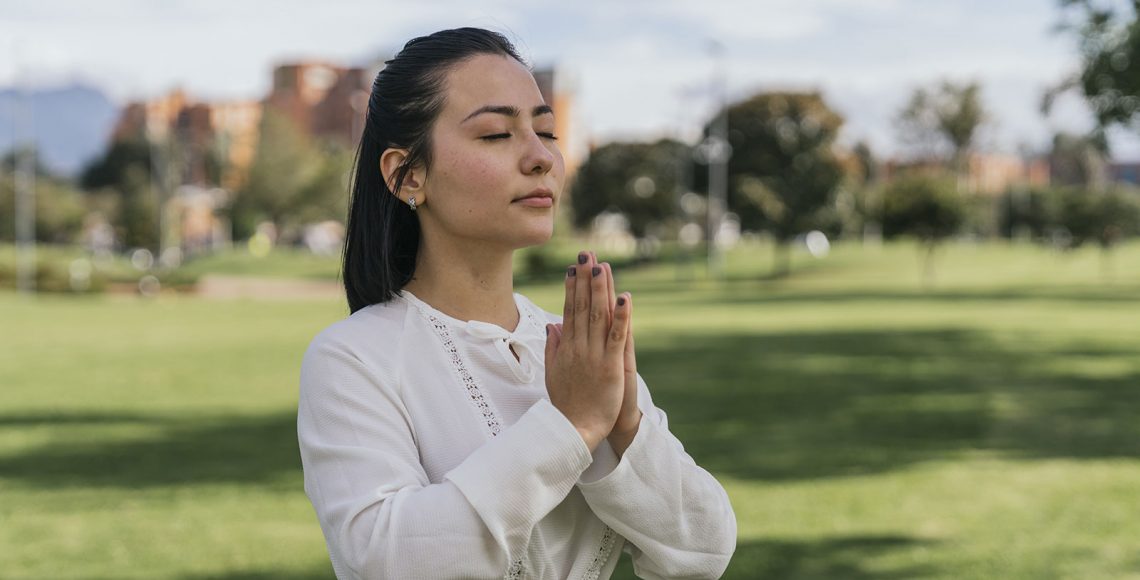3 Easy Exercises to Increase Focus through Mindfulness
It’s easy to get caught up in a pattern of swirling thoughts—thinking about a laundry list of things that need to be done, ruminating on past events, or could-be situations of the future. On average we have over 60,000 thoughts a day, so it’s no surprise it’s becoming trickier to carve out some headspace, especially with the torment of emails, social media, and now Zoom, at our fingertips. With all the things going on now with the global crisis, it seems fitting to shine the spotlight on the practices so many people credit for helping to keep them calm, grounded, and in control – even when the circumstances around them are anything but.
Chances are you’ve probably heard about this thing called mindfulness. The term has become mainstream in both pop culture and rigorous scientific studies. From Google to the NHS and Transport for London. Even Harvard Business School includes mindfulness principles in its leadership programs.

Mindfulness—an intentional state of focused, nonjudgmental awareness of the present moment—doesn’t just foster a pleasant moment of calm. The process of building awareness means noticing body sensations, thoughts, emotions, and details of the environment that occur moment by moment. The key is increasing awareness of your current experience without assigning any judgment, positive or negative.
Research finds mindfulness can physically change brain structures. Scientists find it can be a powerful tool for altering and strengthening key brain networks for the better. Some research has even found that a steady dose of mindfulness over a certain amount of time can physically change brain structures long term, including age-related brain degeneration.
When trying to decide whether you are mindful, consider the following points. In the last week have you found yourself:
- Unable to remember what others have said during conversations?
- With no recollection of your daily commute?
- Eating at your desk without really tasting your food?
- Paying more attention to your iPhone than to your nearest and dearest?
- Dwelling on past events or dreading what the future holds?
- Are you skim reading this article?
If you answered yes, then chances are that you’re zoning out on a regular basis, spending at least some time on autopilot.
The Science of Neuroplasticity
The mind’s many intricate networks of neural pathways are continually and automatically adjusting through a phenomenon called neuroplasticity (neuro-, meaning relating to nerves or the nervous system; and plastic, meaning easily shaped or molded).

“Neuroplasticity is the capacity of the brain to reorganize its connections based on experience.”
– Amishi Jha, PhD, an associate professor in the department of psychology at the University of Miami and the director of contemplative neuroscience for the UMindfulness initiative
The brain’s brilliant malleability allows us to acquire new skills, drop bad habits, adapt to novel environments, and even heal from severe trauma and injury. Neuroplasticity is catalyzed by these events, too. Every new experience or challenge, from breaking an ankle to shopping at an unfamiliar grocery store, compels the brain to rearrange its synaptic connections. And the more you do something, the more established—and less new—these connections become. Repetition is the key to rendering a behavior second nature.
Mindfulness strengthens key brain networks linked to focus, memory, and mood. The same way you lift weights to build strength and dexterity in a specific muscle over time, you can also exercise certain brain networks associated with core cognitive functions (like attention, logic, and memory) and emotion regulation (like quelling anxiety or negative reactions).
Meditation vs Mindfulness vs Mindful Meditation

“Mindfulness involves paying attention to something in a particular way and being in the present moment which calms our busy minds and our nervous system. In theory, mindfulness can be cooking, colouring in or washing the dishes, which is why mundane tasks are now having a comeback.”
– Claire Aristides, a clinical hypnotherapist and founder of the Mindology App
Meditation is an ancient practice of raising your mental consciousness. One might associate it with Eastern religions like Buddhism, but really, it’s just a larger term that encompasses a technique of self-discovery. “Mindfulness” is a small part of meditation as a whole. It means to practice your focus on a small act, like drinking a cup of hot tea, or watching the sun set, or waves lapping up against the shore of a lake. Many of us don’t have a lifetime or even a full day to devote to a practice (not yet, anyway), but we can find a few minutes or even just moments, to practice mindfulness.
Then, there is mindful meditation. This involves paying attention to thoughts, sounds, the sensations of breathing or parts of the body and bringing your mind back whenever it starts to wander. Mindfulness meditation is a mental training practice that teaches you to slow down racing thoughts, let go of negativity, and calm both your mind and body.
While mindfulness practice often comes in the form of mindfulness meditation, Jason Marsh, director of programs for the Greater Good Science Center at the University of California, says this isn’t the only option
“Once you learn mindfulness skills, you can practice them at almost any moment of the day—sitting at your computer, stuck in traffic, even eating. And there’s also growing interest in using the practice of mindfulness in the workplace to provide a buffer against stress.”
Practicing mindfulness not only has physiological benefits for individuals but also has a positive impact on the workplace. Mindfulness helps drive many aspects of a healthy workplace including wellbeing, relationships and creativity.
Stress As A Badge Of Honour
In the current economic climate, employees are being asked to do more with less, working long hours with increasingly heavy workloads. Leading mindfulness academic, Mark Williams, professor of clinical psychology at the University of Oxford, says working in a culture where stress is a badge of honour is counterproductive. We can spend so much time rushing from one task to another. We may think we’re working more efficiently, but as far as the brain is concerned, we are working against the grain. No wonder we get exhausted.

Organizations are becoming more invested in the wellbeing of employees due to an increased awareness of the costs associated with an unhealthy workforce. Absenteeism, lack of productivity and turnover are all very costly issues and are closely related to the employee stress and mental health.
Resilience and the ability to deal with difficult situations is critical to wellbeing. Mindfulness at work can support resilience by equipping employees with the ability to understand their emotions, their level of stress and their ability to influence them. Mindfulness training employees to respond to difficult situations effectively and has been shown to have a positive effect on stress and burnout.
Mindfulness expert Mirabai Bush, famous for introducing it to Google, says:
“Introducing mindfulness into the workplace does not prevent conflict from arising or difficult issues from coming up. But when difficult issues do arise… they are more likely to be skillfully acknowledged, held, and responded to by the group. Over time with mindfulness, we learn to develop the inner resources that will help us navigate through difficult, trying, and stressful situations with more ease, comfort, and grace.”
While practicing mindfulness in the workplace is important, making it a daily habit is much more so. Most of us don’t have five minutes to sit down and relax, let alone 30 minutes or more for a meditation session. But it is essential for our wellbeing to take a few minutes each day to cultivate mental spaciousness and achieve a positive mind-body balance.

Simple Mindfulness Exercises
You can use these simple mindfulness exercises to empty your mind and find some much-needed calm amidst the madness of your hectic day.
Mindful Breathing: This exercise can be done standing up or sitting down, and pretty much anywhere at any time. If you can sit down in the meditation (lotus) position, that’s great, if not, no worries.
Start by breathing in and out slowly. One breath cycle should last for approximately 6 seconds.
Breathe in through your nose and out through your mouth, letting your breath flow effortlessly in and out of your body. Let go of your thoughts. Let go of things you have to do later today or pending projects that need your attention. Simply let thoughts rise and fall of their own accord and be at one with your breath. Purposefully watch your breath, focusing your sense of awareness on its pathway as it enters your body and fills you with life. Then watch with your awareness as it works its way up and out of your mouth and its energy dissipates into the world.
Mindful Observation: This exercise is simple but incredibly powerful because it helps you notice and appreciate seemingly simple elements of your environment in a more profound way.
The exercise is designed to connect us with the beauty of the natural environment, something that is easily missed when we are rushing around in the car or hopping on and off trains on the way to work.
Choose a natural object from within your immediate environment and focus on watching it for a minute or two. This could be a flower or an insect, or even the clouds or the moon. Don’t do anything except notice the thing you are looking at. Simply relax into watching for as long as your concentration allows. Look at this object as if you are seeing it for the first time.
Visually explore every aspect of its formation, and allow yourself to be consumed by its presence. Allow yourself to connect with its energy and its purpose within the natural world.
Mindful Awareness: This exercise is designed to cultivate a heightened awareness and appreciation of simple daily tasks and the results they achieve. Think of something that happens every day more than once; something you take for granted, like opening a door, for example.
At the very moment you touch the doorknob to open the door, stop for a moment and be mindful of where you are, how you feel in that moment and where the door will lead you. Similarly, the moment you open your computer to start work, take a moment to appreciate the hands that enable this process and the brain that facilitates your understanding of how to use the computer. These ‘touch point’ cues don’t have to be physical ones.
For example: Each time you think a negative thought, you might choose to take a moment to stop, label the thought as unhelpful and release the negativity. Or, perhaps each time you smell food, you take a moment to stop and appreciate how lucky you are to have good food to eat and share with your family and friends.
Choose a touch point that resonates with you today and, instead of going through your daily motions on autopilot, take occasional moments to stop and cultivate purposeful awareness of what you are doing and the blessings these actions bring to your life.

You can do most things mindfully. Anytime that you are resting your attention in the present moment and whatever you are doing/experiencing you are practicing being mindful. Not only does this enrich the present moment activity/experience you’re engaging in, but it also allows you to be present in your time rather than going back into the past or into the future. Doing everyday tasks can lead you to do little mindful exercises.
Brushing your teeth: Feel your feet on the floor, the brush in your hand, and your arm moving up and down.
Doing dishes: Savor the feeling of the warm water on your hands, the look of the bubbles, and the sounds of the pans clunking on the bottom of the sink.
Doing laundry: Pay attention to the smell of the clean clothes and feel of the fabric. Add a focus element and count your breaths as you fold laundry.
Driving: Turn off the radio—or put on something soothing, like classical music—imagine your spine growing tall, find the half-way point between relaxing your hands and gripping the wheel too tightly, and whenever you notice your mind wandering, bring your attention back to where you and your car are in space.
Exercising: Instead of watching television while on the treadmill, try focusing on your breathing and where your feet are in space as you move.
Getting kids ready for bed: Get down to the same level as your kids, look in their eyes, listen more than you talk, and savor any snuggles. When you relax, they will too.
But begin
Of course, life can get in the way — maybe your little one calls for help while you’re washing the dishes or a tricky traffic situation means you have to be even more focused on the road. It is far better to make small changes you can sustain than to make big changes that don’t last. So start with five minutes a day, but begin. Move from there as you find your rhythm and it can become a sustainable practice.
With regular practice of mindfulness exercises, rather than being led on auto-pilot by emotions influenced by negative past experiences and fears of future occurrences, we harness the ability to root the mind in the present moment and deal with life’s challenges in a clear-minded, calm, assertive way.
It’s not the size of the change, it’s our intention and attention that count. No matter how complicated or stressful life is, it’s always possible to find peace and clarity, right here and now.


